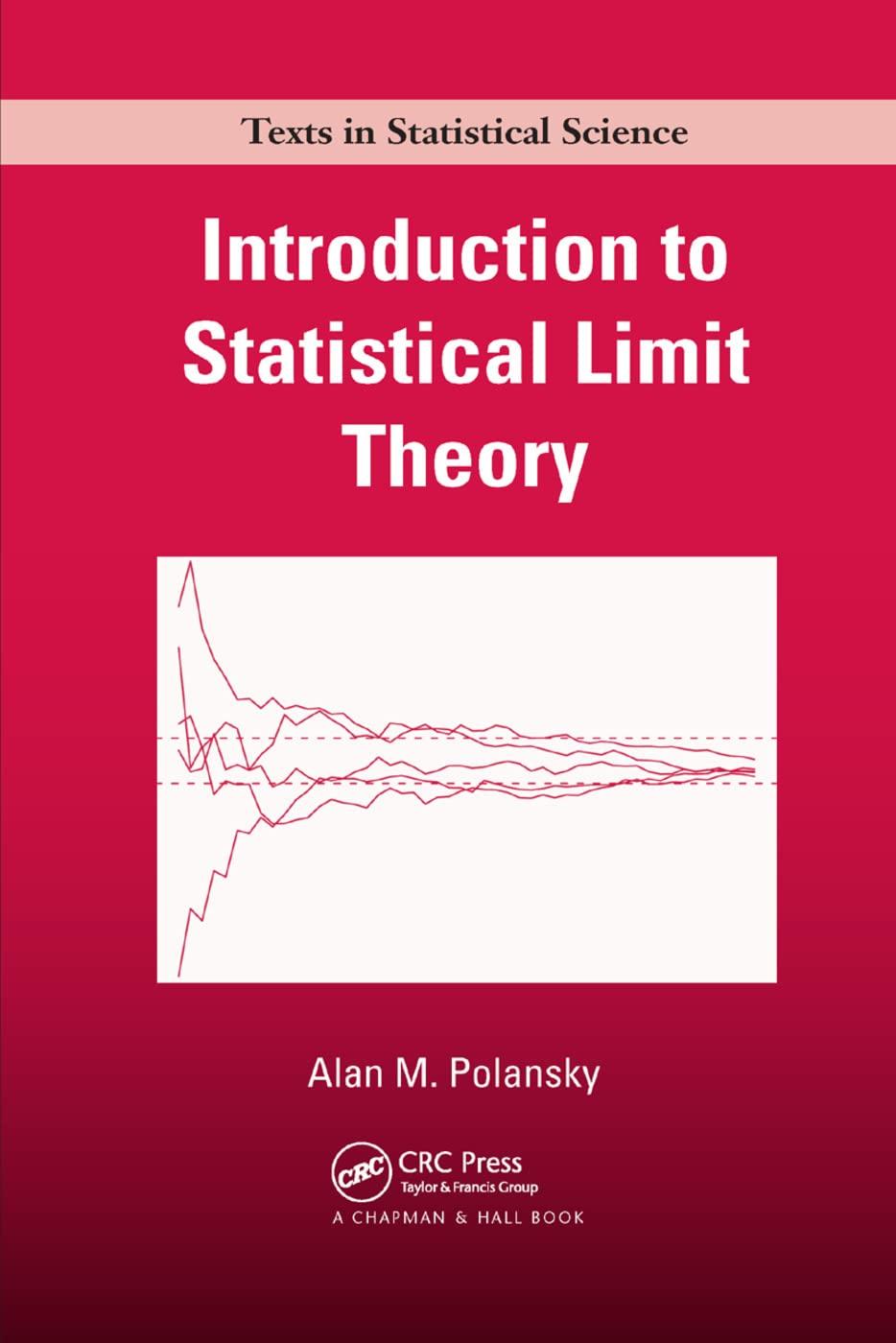Write a program in (mathrm{R}) that generates (b) samples of size (n) from the linear density (f(x)=2[theta+x(1-2
Question:
Write a program in \(\mathrm{R}\) that generates \(b\) samples of size \(n\) from the linear density \(f(x)=2[\theta+x(1-2 \theta)] \delta\{x ;(0,1)\}\) studied in Example 7.2. Recall that the first four moments of this density are given by \(\mu=\mu_{1}=\frac{2}{3}-\frac{1}{3} \theta\), \(\sigma^{2}=\mu_{2}=\frac{1}{18}+\frac{1}{9} \theta-\frac{1}{9} \theta^{2}, \mu_{3}=-\frac{1}{135}-\frac{1}{45} \theta+\frac{1}{9} \theta^{2}-\frac{2}{27} \theta^{3}\), and \(\mu_{4}=\) \(\frac{1}{135}+\frac{4}{135} \theta-\frac{1}{15} \theta^{2}+\frac{2}{27} \theta^{3}-\frac{1}{27} \theta^{4}\). For each sample compute the statistic \(Z_{n}=n^{1 / 2} \sigma^{-1}\left(\bar{X}_{n}-\muight)\) where \(\mu\) and \(\sigma\) correspond to the mean and standard deviation specified above. Produce a plot of the empirical distribution function of the \(b\) values of \(Z_{n}\). On each plot overlay a plot of the standard normal distribution function and the function given by the one-term Edgeworth expansion. Discuss how these functions compare to what would be expected for large \(n\) as regulated by the underlying theory given by Theorems 4.20 and 7.4. Run this simulation for \(n=10,25,50\), and 100 each with \(\theta=0.10,0.25\), and 0.50 .
Step by Step Answer:





